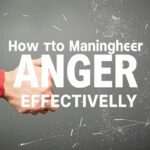Understanding Performance Anxiety in Sports
Performance anxiety in sports is a common challenge faced by athletes at all levels, from amateur enthusiasts to elite professionals. It’s that gnawing feeling of nervousness, worry, or fear that creeps in right before or during a competition, threatening to disrupt focus and impair performance. But why does performance anxiety happen, and how does it affect athletes? Essentially, the pressure to perform well, fear of failure, or high expectations—whether self-imposed or external—can trigger this mental state. When anxiety takes center stage, it triggers physiological symptoms like increased heart rate, sweating, and shaky muscles, as well as psychological effects such as negative thoughts and doubts. This cocktail can seriously undermine an athlete’s confidence and ability to perform.
Causes of Performance Anxiety in Sports
Every athlete experiences anxiety differently, and understanding its causes is the first step in tackling it. Let’s break down some of the most common triggers that can spike anxiety during sporting events:
- Fear of failure: The fear of making mistakes or losing can loom large, especially in high-stakes competitions.
- High expectations: Pressure from coaches, teammates, family, or even internal expectations can magnify stress.
- Past experiences: Previous underperformances or traumatic events can haunt an athlete, creating anticipation around negative outcomes.
- Uncertainty: Facing an unknown opponent, unfamiliar environment, or unpredictable circumstances can rattle nerves.
- Physical fatigue: When the body is tired, the mind may become more vulnerable to worry and self-doubt.
How Performance Anxiety Manifests in Athletes
It’s important to recognize how performance anxiety shows up. By identifying these symptoms early, athletes can work on proactive strategies to regain control. The manifestations fall into three main categories:
Physical Symptoms
- Increased heart rate and rapid breathing
- Sweating excessively
- Muscle tension and trembling
- Dry mouth or nausea
- Feeling lightheaded or dizzy
Mental Symptoms
- Racing thoughts or inability to concentrate
- Negative self-talk or self-doubt
- Fear of judgment or failure
- Memory lapses or blocks
Behavioral Symptoms
- Avoidance of competition or practice
- Reduced risk-taking or playing it safe excessively
- Increased irritability or mood swings
- Seeking constant reassurance from others
The Impact of Performance Anxiety on Sporting Outcomes
Performance anxiety can impair an athlete’s ability to perform optimally. When anxiety levels escalate, they often enter what is called the “choking” zone—a state where fine motor skills decline, decision-making becomes impaired, and overall coordination suffers. This can lead to mistakes that wouldn’t normally happen, such as missed shots in basketball, botched serves in tennis, or poor timing in track and field events. Unfortunately, this can create a vicious cycle: anxiety leads to poor performance, which in turn heightens anxiety.
Table: The Relationship Between Anxiety Level and Performance
| Anxiety Level | Effect on Performance |
|---|---|
| Low Anxiety | Suboptimal alertness, lack of focus |
| Moderate Anxiety | Peak performance, improved concentration and motivation |
| High Anxiety | Choking, impaired coordination, loss of focus |
Strategies to Manage and Overcome Performance Anxiety in Sports

The good news is, performance anxiety is manageable. Many athletes who once struggled have learned to harness and channel these feelings effectively. Here are some proven techniques:
1. Mental Preparation and Visualization
Visualization involves mentally rehearsing the competition scenario, imagining success and positive outcomes. This technique helps familiarize the mind with pressure situations, reducing fear of the unknown.
2. Breathing and Relaxation Exercises
Controlled breathing techniques like diaphragmatic breathing or the 4-7-8 method help calm the nervous system, lowering heart rate and reducing muscle tension in moments of peak anxiety.
3. Developing Pre-Performance Routines
A consistent routine before performance—such as warm-up exercises, listening to specific music, or specific rituals—can build a sense of control and trigger a calm, focused mindset.
4. Cognitive Behavioral Techniques
Challenging negative self-talk and replacing it with positive affirmations can help athletes combat self-doubt. Techniques like reframing (“I am prepared for this challenge” instead of “I might fail”) are powerful tools.
5. Goal Setting and Focus on Process
Instead of obsessing over winning or losing, setting small, controllable goals—such as focusing on technique or effort—can anchor attention on the present moment and reduce anxiety linked to outcomes.
6. Physical Conditioning and Adequate Rest
A well-trained body that feels strong and rested is less susceptible to the physical symptoms of anxiety. Proper nutrition, hydration, and rest play a major part.
The Role of Coaches, Parents, and Teammates

Supporting an athlete with performance anxiety is a team effort. Coaches and teammates should foster an environment that emphasizes growth and effort over just winning. Constructive feedback, patience, and empathy can reduce external pressures contributing to anxiety. Parents should encourage participation for enjoyment and self-improvement rather than only focusing on results.
List: Tips for Supporters of Anxious Athletes
- Listen actively and provide emotional support rather than criticism.
- Encourage a balanced perspective on competition and enjoyment of the sport.
- Model calmness and confidence during stressful moments.
- Avoid adding pressure with unrealistic expectations.
- Promote healthy habits around training and recovery.
The Science Behind Performance Anxiety: What Research Says
Neuroscience explores how anxiety impacts the brain during performance situations. Anxiety activates the amygdala—the brain’s threat detector—causing a “fight or flight” response. In moderate amounts, this heightened arousal can sharpen alertness, but excessive activation disrupts the prefrontal cortex, which governs decision-making, attention, and motor control. Understanding this delicate balance offers clues on why anxiety can both enhance or hinder performance. Research also highlights the importance of building resilience and adaptive coping strategies over time.
Athlete Stories: Real-Life Experiences with Performance Anxiety
Hearing from athletes who wrestle with performance anxiety helps normalize the experience. Take Serena Williams, for instance, who has been open about feeling intense pressure to perform while competing on the world stage. Or NBA players who admit to struggling with “free throw jitters.” These stories show that anxiety doesn’t discriminate, and even the greatest champions face mental battles. What sets them apart is their commitment to mental training alongside physical training.
Performance Anxiety in Youth Sports

Performance anxiety isn’t limited to elite athletes; children and teens often face these pressures as well. Youth sports should prioritize learning, fun, and personal growth, but many young players still experience stress linked to competition and expectations. Early education on coping techniques coupled with encouraging environments can prevent anxiety from turning into a long-term problem.
When to Seek Professional Help
While many athletes manage performance anxiety on their own or with basic support, severe or persistent symptoms may require professional intervention. Sport psychologists specialize in working with athletes to develop mental skills and address anxiety in a clinical way. Signs that professional help is needed include frequent panic attacks, avoidance of competition, or anxiety that affects daily functioning beyond sports.
Table: When to Consider Professional Support for Performance Anxiety
| Sign | Description |
|---|---|
| Persistent Anxiety | Feels anxious before and during competition despite tried strategies |
| Avoidance Behavior | Regularly skips practice or competitions due to fear |
| Physical Symptoms | Severe symptoms such as panic attacks or nausea impair performance |
| Impaired Daily Life | Anxiety impacts activities outside sports (school, social life) |
The Future of Managing Performance Anxiety in Sports
Emerging technologies like biofeedback devices, virtual reality training, and mindfulness apps are making mental training more accessible and personalized. Athletes can now monitor physiological signs in real time and practice anxiety-reducing techniques with guided digital tools. The growing recognition of mental health in sports is driving a culture shift—moving from stigma to acceptance and proactive care, which benefits all athletes.
Summary of Key Strategies to Overcome Performance Anxiety
- Recognize and accept anxiety as normal
- Engage in mental preparation and visualization
- Practice relaxation and breathing techniques
- Create pre-performance routines
- Use positive self-talk and cognitive restructuring
- Focus on process goals over outcome goals
- Maintain physical conditioning and rest
- Build a supportive network around the athlete
- Seek professional mental health support if needed
Conclusion
Performance anxiety in sports is a natural experience that challenges many athletes, but it doesn’t have to be a barrier to success. By understanding its causes, recognizing symptoms, and adopting practical strategies, athletes can transform anxiety from a foe into an ally that heightens focus and determination. Support from coaches, family, and mental health professionals enriches this journey, making performance anxiety manageable and even a stepping stone toward peak performance. Ultimately, when athletes learn to conquer their inner doubts and stay present, they unlock their true potential and enjoy the sport on a deeper, more rewarding level. So whether you’re a seasoned competitor or just starting your athletic journey, embracing and managing performance anxiety is key to thriving in sports and beyond.




















